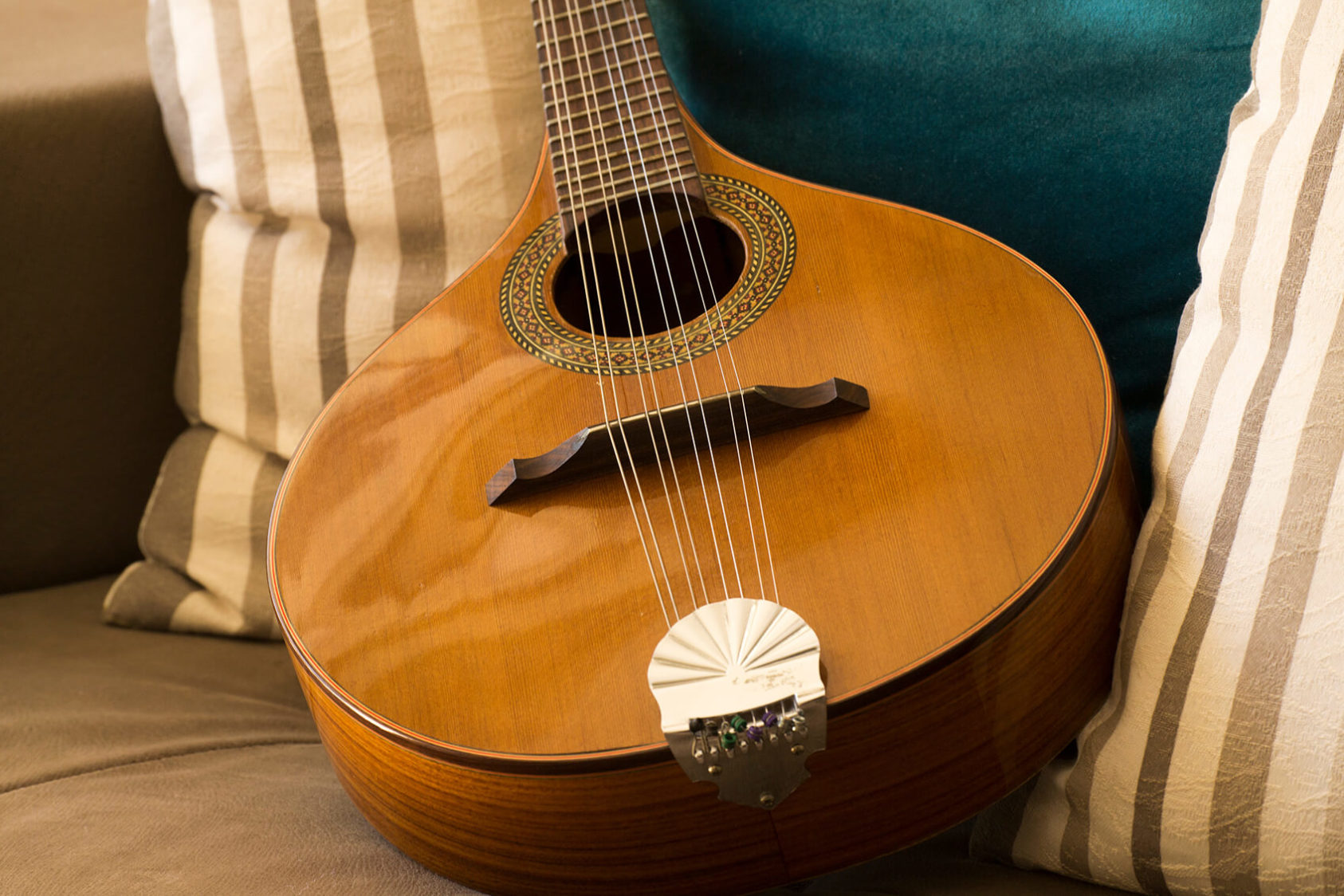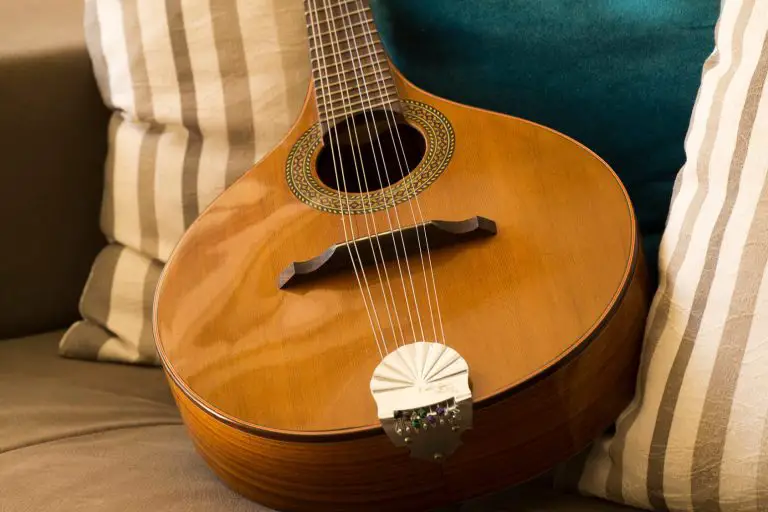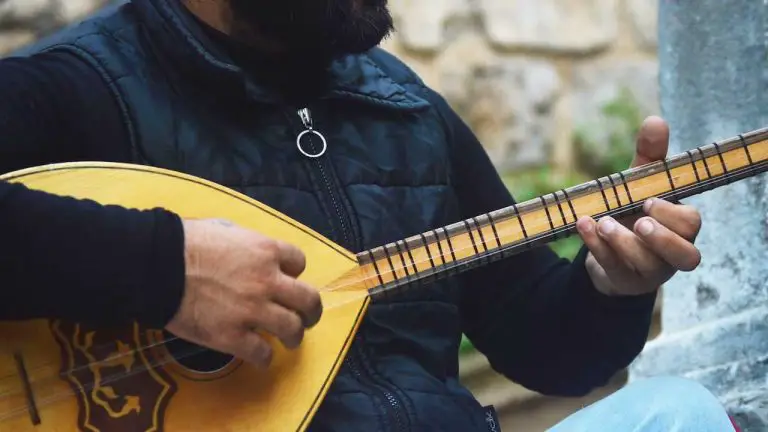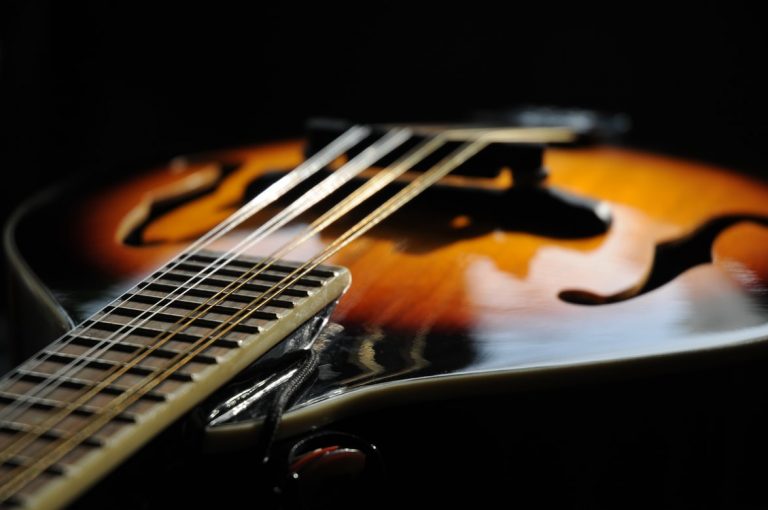Best Beginner Mandolin: Your Guide to Starting on the Right Note
Folkstrings.com is reader-supported. When you buy through links on our site, we may earn a small commission.
Discovering the best beginner mandolin is an exciting journey into the world of stringed instruments.
As a beginner, it’s important to find an instrument that not only fits your budget but also encourages comfortable learning.
I’ve spent time researching options and have realized that the mandolin, with its rich history and unique sound, is a welcoming instrument for newcomers.
While ideally suited for folk, bluegrass, and classical music, the mandolin’s versatility also extends to jazz and other genres.
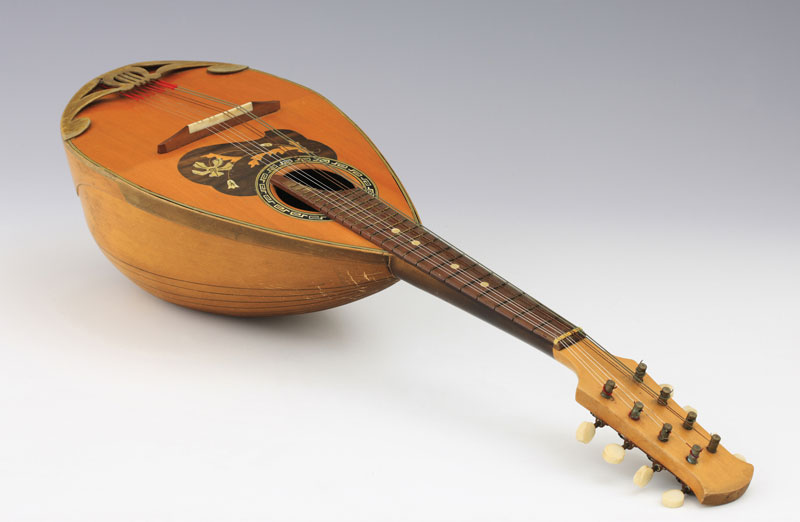
My approach to selecting a beginner mandolin involved understanding essential characteristics like ease of playability, build quality, and the tone it produces.
I also considered what accessories come bundled with mandolins aimed at beginners, as these can often add significant value and assist in the early stages of learning.
Key Points…
- The best beginner mandolin should be user-friendly and align with my budget needs.
- Quality and playability are essential factors in my choice of a beginner mandolin.
- A good beginner mandolin bundle includes necessary accessories to start playing immediately.
My Top 3 Picks – Mandolins for Beginners
When starting out, I recommend getting a mandolin that balances quality with affordability. Beginner mandolins should be playable and durable to sustain interest as you learn.

- Solid German spruce top gives you clean articulation and a crisp, bright tone
- Solid Alpine maple back and sides for extra punch
- Slim Alpine maple neck for comfortable, easy action
- Choice tonewood fingerboard ensures silky smooth playability
- High-gloss sunburst finish creates traditional beauty and luster
Popular Picks for Beginners
- Kentucky KM-150 Standard A-model Mandolin: Its solid spruce top brings out a rich and clear tone, which I find crucial for beginners to hear precise notes as they practice.
- Ibanez M510DVS Mandolin: This mandolin stands out with its good craftsmanship and playability, at an entry-level price point, making it an excellent choice for my beginner friends.
- Rogue RM-100A A-style Mandolin: Known for its affordability and decent quality, the Rogue RM-100A is a popular option I recommend for those curious about the mandolin without committing to a higher-priced instrument.
Mandolin Basics
When I began my journey with the mandolin, I quickly realized the importance of understanding its history, its varied types, the materials used for its construction, and the difference between acoustic and electric models. This foundational knowledge greatly influenced my choice of instrument.
History and Types
The mandolin has a rich history, stemming from its role as a traditional instrument. It is part of the lute family and has evolved into several types over time. The most common types include the Neapolitan or round-backed mandolin, the flat-backed mandolin, and the archtop mandolin, which is favored in bluegrass music. Each type has a distinctive sound and is suited to different styles of music.
Mandolin Construction and Materials
The construction of the mandolin is paramount to its sound quality. Traditionally, the body is made of wood, with spruce wood often selected for the top due to its resonant qualities. The back and sides are typically crafted from maple or mahogany, both known for their durability and contribution to the instrument’s warm tone.
Acoustic vs. Electric Mandolin
I had to choose between an acoustic mandolin, which purely resonates through its hollow body, or an electric mandolin, which relies on electronic amplification. There’s also the acoustic-electric mandolin, which offers the best of both worlds with a built-in pickup for amplification without compromising its acoustic sound. Each type presents a unique experience, with the acoustic being ideal for traditional settings and the electric for more contemporary performances.
Choosing the Right Mandolin
When I first started playing the mandolin, I realized that selecting the right instrument is critical. It’s like finding a good friend; you want one that complements your style and makes learning enjoyable.
A-Style vs. F-Style
A crucial decision I faced was choosing between an A-style or F-style mandolin.
A-style mandolins are characterized by their simpler, teardrop-shaped bodies which often result in a warmer tone. They tend to be more affordable, making them a great choice for beginners.
On the other hand, F-style mandolins boast a more decorative design with a pronounced scroll near the neck, commonly associated with bluegrass music. They can produce a brighter, more percussive sound but usually come at a higher price.
Sound and Playability
Sound quality and playability are paramount.
A-style mandolins generally deliver a well-rounded sound suitable for many music genres, while F-style mandolins produce a crisp, punchy mandolin sound that cuts through in band settings.
The overall tone of a mandolin is influenced by its tonewood; for instance, spruce tops can give a clear tone, while maple provides brightness.
The feel of the instrument is equally important. I always check that the mandolin feels comfortable in my hands and that the strings respond well to both light and firm touches.
Size and Shape
Lastly, considering the size and shape is important for comfort and sound.
The a-style body is more pear-shaped, making it easier to hold, especially for those like me who prefer playing seated.
The f-style mandolin, with its more elaborate design and curves, can feel bulkier, yet may offer advantages in sound projection, particularly in a band setting.
Always choose a mandolin that feels comfortable; your hands and posture will thank you.
Price and Quality
When I started on the mandolin, I learned that price and quality don’t always go hand-in-hand. It’s crucial to know what makes a mandolin a wise purchase at different price points. Here’s what I’ve found.
The Budget-Friendly Pick
In my search for a beginner mandolin, affordability was key. I discovered that you can find decent mandolins starting at $100, but a vast majority can range from $150-$600 range. Here’s the most budget-friendly option:
- It features clean workmanship throughout and projects a bright tone with lots of bark
- With an easy-to-play neck and adjustable bridge, the RM-100A is perfect for beginners who wish to play bluegrass
- Rogue RM-100A
- Price: About $50-$100
- Good for an absolute beginner
- A little more durable with better sound quality
Value for Money
I found that the best value for money typically comes from instruments that balance price with features expected from higher-end mandolins. Features like solid wood construction, good tuners, and a quality finish matter. Here’s what I suggest looking at when considering value for your money:
- Ibanez M510
- Price: About $150-$300
- It sports a spruce top and mahogany back and sides, offering a richer sound.
- Kentucky KM-150
- Price: About $300-$500
- All solid wood construction elevates sound quality significantly for serious beginners.
Quality Indicators
My own experience taught me to look beyond the price tag to determine quality. Here are specific indicators I check:
- Materials: Solid wood tops produce a fuller tone than laminate.
- Craftsmanship: Proper fret placement and neck alignment are essential for playability.
- Brand Reputation: Well-known brands like Fender and Gibson often mean reliable quality control.
- Reviews: I read other players’ experiences and professional opinions.
By balancing these quality indicators with budget considerations, I was able to find a mandolin that was both affordable and of satisfying quality.
Essential Features and Accessories
When I started learning the mandolin, I quickly realized that certain features and accessories are essential to both playing comfortably and advancing skills. I’ll share with you what I’ve found imperative to get the best out of a beginner mandolin.
Strings and Tuning
My very first lesson was the importance of quality strings and accurate tuning. Mandolin strings greatly influence sound and playability.
I highly recommend medium-gauge strings, as they offer a balance between easy playing and sound quality.
For tuning, consider mandolins with chrome hardware tuners for stability and precision. Always have an extra set of strings and a reliable tuner on hand.
- Strings: Medium-gauge mandolin strings
- Tuners: Chrome hardware for precision
Aesthetics and Finish
I’ve always been fond of an instrument that’s as beautiful as it sounds. A glossy finish is not only visually attractive but also helps in protecting the wood.
My first mandolin had a lovely pearl dot inlay on the fretboard, which, aside from adding to the aesthetics, helped me navigate the neck with ease.
- Finish: High-gloss for protection and shine
- Inlay: Pearl dot for guidance and beauty
Additional Accessories
Lastly, there are a few accessories I found invaluable.
A sturdy gig bag is essential for protecting your mandolin and making transportation a breeze. Extra small items like picks and a cleaning cloth fit nicely in the bag’s pockets.
Even as a beginner, having these accessories made everything about my mandolin experience more enjoyable.
- Gig Bag: To protect and carry your instrument
- Extra: Picks and a cleaning cloth for maintenance
Getting Started with Your Mandolin

When I first picked up the mandolin, I focused on three main areas: how to set it up properly, the basic playing techniques, and its maintenance. Let’s dive into these essentials to get you strumming in no time.
Initial Setup
Tuning Your Mandolin: Before playing, ensure your mandolin stays in tune. Familiarize yourself with the standard GDAE tuning. I often use a clip-on tuner for accuracy, especially when I was just starting.
- G string (nearest to you)
- D string
- A string
- E string (furthest from you)
Check the Features: Inspect your mandolin’s features like the bridge, nut, and frets. Make sure the bridge is properly positioned for correct intonation.
Playing Techniques
Holding the Mandolin: I hold the mandolin with my right arm, providing support, while my left hand navigates the fretboard.
Strumming and Picking: First, I learned basic strumming patterns. Holding the pick between my thumb and index finger, I practiced smooth down-up motions.
Versatility in playing style comes with time, but it begins with these simple strums.
Maintenance and Care
Cleaning: After every session, I clean my mandolin with a soft, dry cloth to remove fingerprints and dust, preserving its look and functionality.
Regular Checks: Periodic checks are paramount to ensure everything is tight and the mandolin features like tuning pegs and strings are in good condition. This helps my instrument stay in tune and sound great.
Frequently Asked Questions
In this section, I’ll answer common questions that beginners often ask when exploring their first mandolin purchase and journey into playing.
What are some affordable mandolins for someone just starting out?
My research suggests that the Rogue RM-100A is a popular choice for budget-conscious beginners. Another affordable option is the Savannah SA-100, which offers a decent quality for those starting out.
Which brands offer the best mandolins for new players?
Brands like Ibanez and Washburn have reputations for providing reliable entry-level mandolins. The Ibanez M510, for instance, is known for its playability, which is crucial for new players.
Are there advantages to learning on an acoustic-electric mandolin for beginners?
Yes, acoustic-electric mandolins offer versatility. They can be played acoustically or amplified for larger venues. This can be encouraging for a beginner who might eventually want to perform.
How can I effectively learn to play the mandolin on my own?
A combination of using books such as the “Complete Mandolinist” and online resources can be very effective. Practice consistently, starting with simple exercises and gradually tackling more complex pieces.
What is the typical price range for a quality beginner mandolin?
Quality beginner mandolins can typically range from $50 to $300. The sweet spot often lies somewhere in the middle, ensuring a good balance between cost and quality for newcomers.
Is learning mandolin considered easier for beginners compared to guitar?
Some aspects of mandolin may be easier due to its smaller size and lighter strings. However, “easier” is subjective and depends on individual preferences and prior musical experience.
Author Profile
-
Daniel Johnstone is an English writer with a love for stringed instruments from around the world.
He shares his love for these instruments through his writing for folkstrings.com, a website dedicated to all things related to folk string music.
Daniel's passion for music started at a young age, and he has since become an accomplished musician, playing guitar, cavaco, and recently, the harp.
His dedication to learning and sharing his knowledge of stringed instruments is evident in his insightful and engaging blog posts. Whether you're a seasoned musician or a beginner, Daniel's writing is sure to inspire and entertain you.
When he's not playing music or writing, you can find Daniel exploring new instruments and seeking out new sounds to share with his readers.
Latest entries
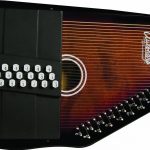 AutoharpApril 4, 2024What Is the Autoharp Made Of: Exploring Its Materials and Craftsmanship
AutoharpApril 4, 2024What Is the Autoharp Made Of: Exploring Its Materials and Craftsmanship AutoharpApril 4, 2024Is Autoharp Easy to Play? Unveiling the Truth for Beginners
AutoharpApril 4, 2024Is Autoharp Easy to Play? Unveiling the Truth for Beginners AutoharpApril 4, 2024What Is an Autoharp Worth? Your Guide to Pricing and Value
AutoharpApril 4, 2024What Is an Autoharp Worth? Your Guide to Pricing and Value AutoharpApril 4, 2024Are Autoharp and Zither the Same Thing? Unraveling String Instrument Myths
AutoharpApril 4, 2024Are Autoharp and Zither the Same Thing? Unraveling String Instrument Myths
Affiliates:
This post may contain affiliate links that at no additional cost to you, the site may earn a small commission. We only recommend products we would use ourselves and all opinions expressed on this site are our own.
Accuracy Advice:
While we strive to provide up-to-date and accurate information, the content in this article may not reflect the most current research or medical guidelines. We encourage readers to do further research and consult with professionals for more personalized advice.
Our Recommendations:
The products and services mentioned in any of our articles are recommended based on our independent research and personal experience. We are not sponsored by any company. We aim to suggest products and services we believe are of high quality and could be beneficial to our readers.

